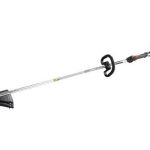If you have electrically-powered lawn equipment, then you can tune this one out right away. You’re one of the lucky ones – you can just plug it in, hit a switch, and it’s ready to go. For those of us who use gasoline-powered equipment, many of us will get the chance to deal with a balky choke at some point in the course of working on our lawn.
What is a Choke?
Often referred to as a choke valve, it moderates the flow of air into the fuel-air mixture. Its primary use is to restrict the air flow when you are trying to start your piece of equipment. This restriction allows for more fuel to be pushed into the combustion chambers. This is important because small engines that are being started cold are poor when it comes to creating evaporation of gasoline.
Problems with a Choke
The most common issue that shows up with the choke system is flooding. If the engine is successfully started, leaving it at full choke for only a few seconds can cause too much fuel to enter into the combustion chamber. This will then cause the the engine to lock up and stall. Once the engine has been flooded, it can take quite a while for the fuel to drain out of the chamber to the point where the mower is easy to start once again. In the most extreme cases, you may need to even open up the engine to drain it and get it back into working order.
A second, fairly common problem is when the choke does not open and close properly or promptly. If your choke sticks, or doesn’t move properly, it can induce a flooding situation even if you follow the right steps for starting. A stuck choke can also prevent you from closing it fully to allow the engine to start properly. If it is not taken care of when it is only sticking slightly, the dirt can build up until the choke is stuck solid.
A Solution for Flooding
You probably never succeed in starting the engine on the first pull of the cord. Instead of repetitively pulling the cord on full choke until it starts, pull until it seems that the engine is right on the cusp of starting. If you feel that the next pull will start it, move the lever to half-choke. This will allow some air to enter, and will reduce the likelihood of the engine flooding.
Fixing the Choke Opening and Closing
To keep the choke opening and closing properly, you’ll need to check and lubricate the choke shaft, as well as the choke linkage. Dealing with the choke shaft to improve movement is very simple – just spray carburetor cleaner along the shaft to loosen the grit. It will be knocked off during use, allowing the choke to return to working properly.
A second thing to check is the choke linkage. If this isn’t properly adjust, it may not close or open the choke as it is supposed to. By loosening the cable mounting bracket, as highlighted in the owners manual of a piece of equipment, the owner can move the choke lever and the cable casing to fix any gaps or problems with movement.
A choke is not some weird, difficult-to-understand part of the equipment. It has a simple function, simple operation, and really isn’t all that difficult to diagnose and repair. It just sounds a bit daunting. But anyone with the the proper screwdrivers and minor technical know-how can make sure a choke will never delay their work day again.






